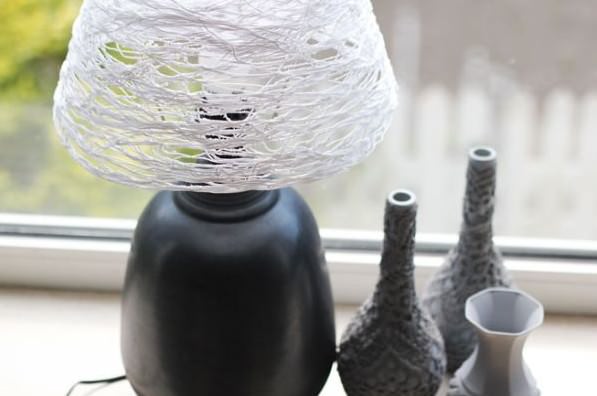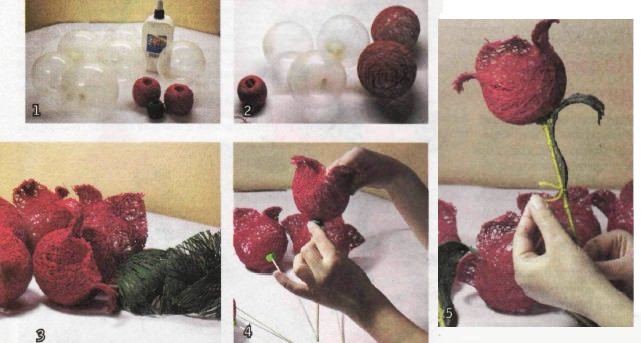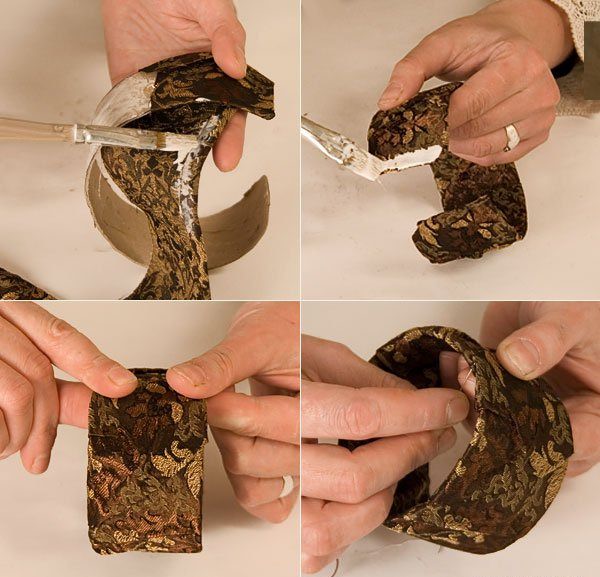
Crafts from threads and glue stylish products with own hands (photo)
Content
- Lampshade from thread
- Lampshade without skeleton
- Large lampshades
- Video: we learn how to make chandeliers and lampshades with our own hands
Interior or clothing items created by their ownHands, always attract attention. They are unique and attractive, always correspond to all the preferences of the owner. A person is able to create almost everything, but if it is a question of creating hand-made articles, it is better to choose materials that are pleasant to the touch and easy to work with.
Optimal items for manual work easilyFind, because most types of needlework is based on handy materials. One such material is the thread. You can always pick up threads of the required quality, thickness, composition, color. The advantage of the thread is also their cheapness and prevalence.
In each house there is certainly a lamp, andOften not one. And if you are bored with its appearance, you do not need to buy a new one, you can give a new extraordinary shade to a bored light. The easiest way is to make it out of thread. To work with threads, glue is also useful, it reliably fixes the threads and is easy to use.





Lampshade from thread
Crafts made of thread and glue have a number of advantages:
- Easy to manufacture;
- Inexpensive;
- Can be created with children;
- It is always easy to fix errors and inaccuracies.
With their own hands, a spider's web made of thread for a shade is easy enough. For work useful:
- Glue, if you work for the first time or with your children - optimal PVA;
- Thread, fairly dense, but not too thick, pleasant to the touch and color, preferably natural;
- A vessel for impregnating filaments with glue;
- The basis for the formation of a lamp shade.

In order to weave a thread of a product,A solid foundation is needed. Threads that have not been processed by any special composition are not able to keep their own shape. The basis can be relatively light or rather heavy, it all depends on how difficult the result should be.
Creating a lampshade from the thread with your own hands, you canUse a metal base from an old lampshade or create a base of other objects. It should be decided in advance whether the frame will be part of the finished lampshade or it will be removed after the final completion of the work. If the lampshade remains a part of the finished product, it is optimal to use a metal frame. For the frame material, you can select a wood or hardening plastic. The main thing is that the frame does not overheat too much when the lamp is on. For the same reason, it is not recommended to use artificial filaments that are able to overheat from an incandescent lamp in small lampshades.

In the process of creating a lamp shadeWill have to create a web of threads. This does not necessarily have to be a certain pattern. With a high level of skill and experience in creating similar products from threads, experienced craftsmen create a complex web of patterns with colorful threads. For those who are just beginning, it is worthwhile to dwell on a lighter version.
The lampshade from threads is created byCreating a dense pattern of threads on a clean and ready-to-use frame. If some faces or places of the carcass are not to be braided, they can be painted or otherwise noted these places, since after starting work with hands, it is inconvenient to tackle something. Thread should be soaked in glue. For this you can use a special bath.

If the work will use threads of differentFlowers, short enough, you can pour the glue into a deep plate and lay the threads there. If the thread is long enough, it will be somewhat inconvenient. In this case it is necessary to manually lower each piece of thread in the glue before using it.
As a small trick is to useA small plastic jar. With a thick awl, the bottle should be pierced through and threaded through it. So there will be no need to wet the thread with glue and glue drops around the workplace will be much less. One hand holds the frame, the second we wind on it a spider's web of threads. Simultaneously, with both hands, we control the thread tension and its position relative to the frame and threads laid earlier. If you are planning to create a multilayer lampshade with your own hands, you must first wait for the complete drying of the first layer.
The great advantage of PVA is that it is easy to wash off your hands, can be used by children and the drying speed allows you to give the necessary shape to the threads.

You can not just wind, but weaveLampshade, for this you should not just lay the threads. You can weave, for example with the technique of macrame, a ready lampshade, and then soak it in a glutinous or starchy solution. In a drying state, you should pull the lampshade on the prepared substrate and wait until it dries completely.
To decorate such a lampshade, made by own hands, you can additionally weave small flowers or strips of colored threads, which are also attached to the dried base with glue.
Use of an adhesive gun can serveAn excellent replacement for PVA. However, there is not a complete impregnation of the used threads. It is necessary first to weave all the necessary ornaments, and then to take up the gun. Carefully applying the ready decorations to the necessary places, they should be slightly pressed and hold hands on the selected place for a few seconds, until the glue stops.
Lampshade without skeleton
If you do not want to weave a lampshade from the thread aroundSome frame, you can use a little trick. Instead of the base, you should use a balloon. The most ordinary ball should be inflated and tied. Wetting the thread in the glue, you should weave
. You can weave several threads togetherOne or different colors, apply an arbitrary pattern or create a whole picture, entangling the ball. When the created pattern is ready, the ball must be placed on the jar and allowed to dry. Then you need to pierce the ball and gently pull out the remains of the ball with your hands. When winding, you should leave such a hole, which will allow you to put the finished lampshade on the plafond.






Large lampshades

If you plan to create a fairly largeA lamp shade or it is necessary to weave a lampshade of mysterious and unusual shape, it is better to use wallpaper paste. Here it is better not to allow children to work. If you use threads of different thickness, the lamp shade will be more relief. The threads must be well soaked in a tray with glue, and the base should be lubricated with petroleum jelly.
It is not at all necessary to weave a closed round shade, it can be open, unfolding or tapering. It is possible to weave a shade of an arbitrary shape, the main thing is to find a suitable form for drying.
It is possible to weave small separate smallElements that will join in a lampshade of an arbitrary shape. With the help of different types of glue, you can fasten the created elements and the fancy web of pattern. For example, you can create a dangling lampshade from the flowers or circles. The main thing is fantasy, desire and the availability of the necessary basis.

Before weaving the lamp shade, it is necessaryDetermine where he will be located, how thick and thick he will be. So it's easier to decide what form it will be. After the design has dried up, it is possible to correct its height and the shape of the edge with the help of a sharp object.
Beautifully look knitted lampshades, connectingA web of fine threads and patterned elements. Such a knitted ball can also be treated with starch or other glue and stretched to dry. The ideal surface for drying is an air balloon, it is easy to smear or wrap it, it costs a little, it is easy to burst and remove from the middle of the finished lampshade.
Glue PVA is chosen for children's crafts, thinThreads and lampshades on a small lamp, an adhesive gun is best used for attaching small parts to a reinforced base. Starch and building glue are ideal materials for creating large lampshades or intricate designs, for which a strong fixation is necessary. When choosing the adhesive, you should consider:

How safe it is at work and after it, because the lamp shade will release into the air substances from the glue;- How quickly the glue dries up, it is important to be able to create the necessary forms;
- What color will the glue left on the threads have;
- How does the glue transfer heat and does not start to emit an unpleasant odor.
Restrictions for their imagination are sought only by those who do not want to create something with their own hands, but for other borders there does not exist. You can create everything, you need hands, fantasy and time.
Video: we learn how to make chandeliers and lampshades with our own hands




